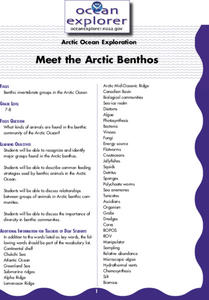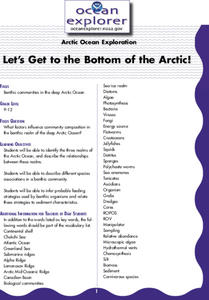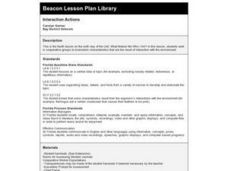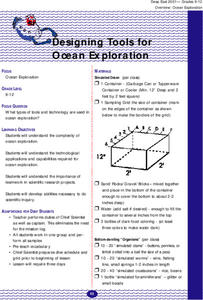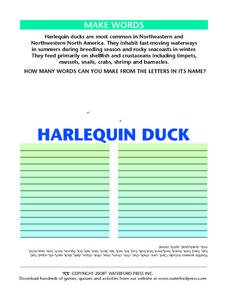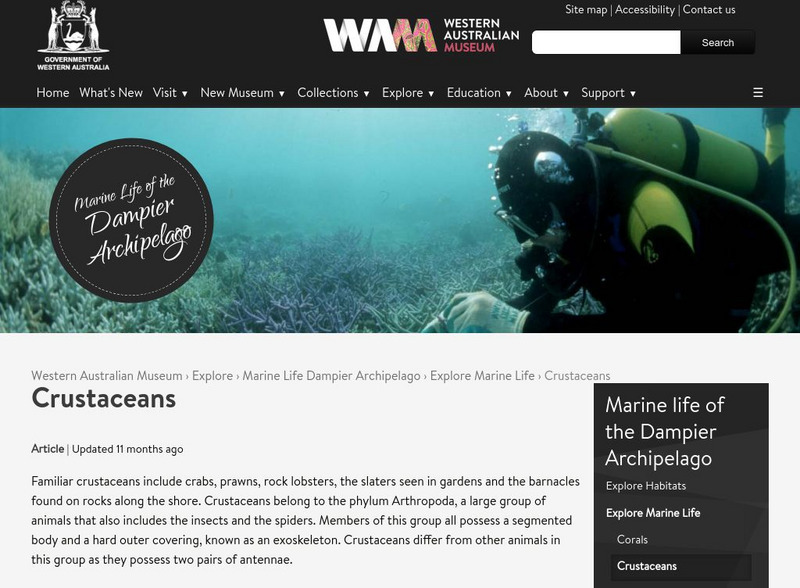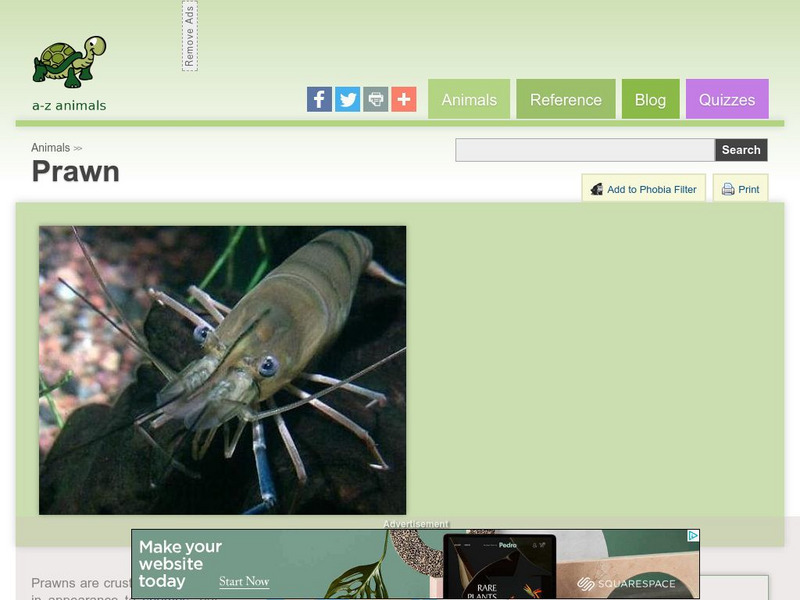Curated OER
Meet the Arctic Benthos
Students recognize and identify major groups found in the Arctic benthos. They describe common feeding strategies used by benthic animals in the Arctic Ocean. They discuss relationships between
Curated OER
Let's Get to the Bottom of the Arctic!
Students identify the three realms of the Arctic Ocean, and describe the relationships between these realms. They describe different species associations in a benthic community.
Curated OER
An "Eggs"traordinary Sculpture
Eighth graders identify and categorize different types of animals which lay eggs, use a five step method for viewing and interpreting a piece of artwork, and use an indirect method to find the mass of a large object.
Curated OER
Interaction Actions
Fifth graders, in groups, write about things that happen as a result of interacting with their environment.
Curated OER
Stream Habitats and Biota
Students identify native and introduced species of fish, shellfish and insects that inhabit Hawaii's streams. They use this information to predict the impact of stream restoration projects in Hawaii.
Curated OER
Amphipod Ecology
Learners count amphipods under kelp wracks of varying ages to explain how long it takes for them to find their food source. They collect and represent the data.
Curated OER
Designing Tools for Ocean Exploration
Students research the methods and tools used in ocean exploration. They, in groups, simulate an ocean exploration and consider what tools facilitate the exploration's objectives.
Curated OER
Land Use
Students examine ecosystems that covered Illinois 200 years ago, investigate some living and non-living components of ecosystems, identify components of prairie system, create food webs, and observe human effects on environment. Lessons...
Curated OER
Build A "Bug"
Students brainstorm different adaptations that bug would need to live in aquatic environment, and watch presentation where classmate is dressed up in costume to represent adaptations necessary for macroinvertebrate to survive in water.
Curated OER
Hatching Brine shrimp
Second graders investigate the life cycle using brine shrimp as an example. They conduct observations by watching the shrimp hatch out of cysts. Students design simple experiment to structure an observation. The experiment is approved...
Curated OER
Make Words: Harlequin Duck
In this science and language arts worksheet, students look at a picture of a harlequin duck and read a factual paragraph. Students then make as many words as they can from the letters in "Harlequin duck."
Curated OER
The Effect of Automobile Exhaust on Hydra in an Environmental Chamber
Pupils study the structure and habitat of the hydra in this lab lesson. Students determine if the hydra can be used as an indicator to detect pollution from automobile exhaust.
Curated OER
The First Thanksgiving: Crossword
For this Thanksgiving worksheet, students use a set of 11 clues about Thanksgiving to complete a crossword puzzle; answers are given on page 2.
Curated OER
Antarctica Food Chain
Young scholars visit an interactive web page. For this food chain lesson, students visit an interactive web page displaying an example of the food chain in Antarctica. As young scholars move their mouse over the images, captions appear...
Curated OER
AUSTRALIA
Learners examine the different types of barrier reefs and how they are formed. In this barrier reef lesson students complete several activities on coral reefs.
Other
Western Australian Museum: Crustaceans: Marine Life of the Dampier Archipelago
Do you know how Crustaceans differ from other animals that belong to the Arthropod family? Find the answer to this question along with other interesting facts about this marine animal.
CK-12 Foundation
Ck 12: Life Science: Crustaceans
[Free Registration/Login may be required to access all resource tools.] Crustaceans are a large group of arthropods, consisting of almost 52,000 species. The majority of crustaceans are aquatic. A few groups have adapted to living on...
Other
N. Carolina Dep. Of Environment & Natural Resources: Cool Kids: Crustaceans
There is all kinds of information about crustaceans available at this site from the North Carolina Department of Marine Fisheries. You can see what types of shrimp and crabs are in the area or connect the dots of your own crustacean.
Other
Sea and Sky: Crustaceans
A concise description of Crustaceans with a number of colorful pictures that students will enjoy.
Saint Louis Zoo
Saint Louis Zoo: Crustaceans
Discover fun facts and learn about the habitat, diet, and appearance of crustaceans.
Unite for Literacy
Unite for Literacy: Animals: Roly Poly
Read facts about the amazing pillbug and how this crustacean helps humans. Includes audio narration in 6 additional languages with text in English.
Biology 4 kids
Biology4 Kids: Cool Crustaceans
What crustacean lives outside of water? Find out while perusing this text about crustaceans, a large category of arthropods.
Science Buddies
Science Buddies: Caffeine and Heart Rate: A Pharmacological Study Using Daphnia
In this project, water fleas (Daphnia magna), a semi-transparent freshwater crustacean, are used to study the effects of caffeine on heart rate. You do not have to learn how to take a crustacean's pulse though, because you can actually...
A-Z Animals
A Z Animals: Animal Facts: Prawn (Dendrobranchiata)
Provides photograph and facts about the prawn, a crustacean. Discusses physical characteristics, where they are found, diet, and how humans use them.
Other popular searches
- Marine Crustaceans
- Shells and Crustaceans
- Crustaceans of the Ocean
- Crustaceans Kindergarten
- Crustaceans 2nd Grade
- Crustaceans Animals


